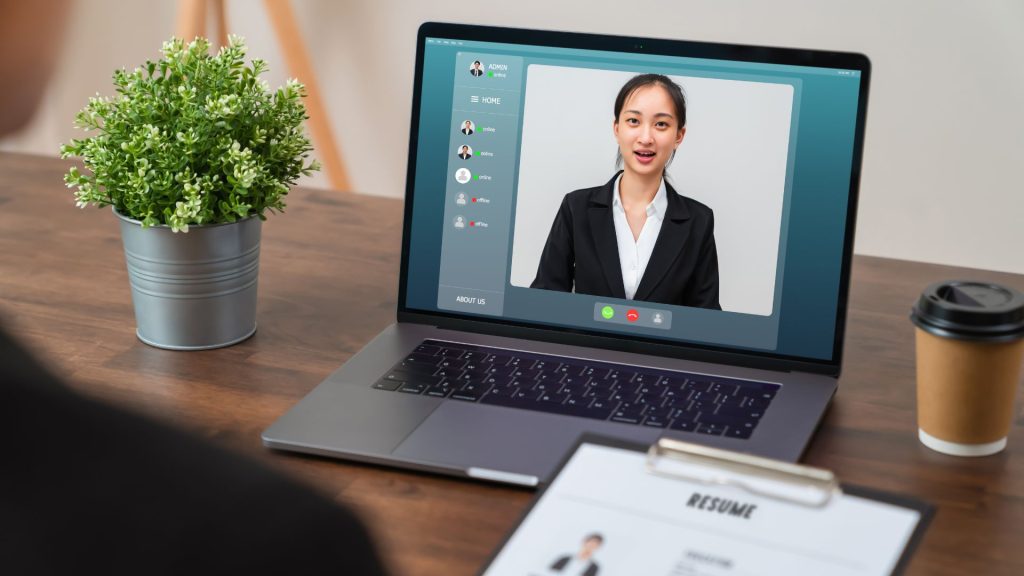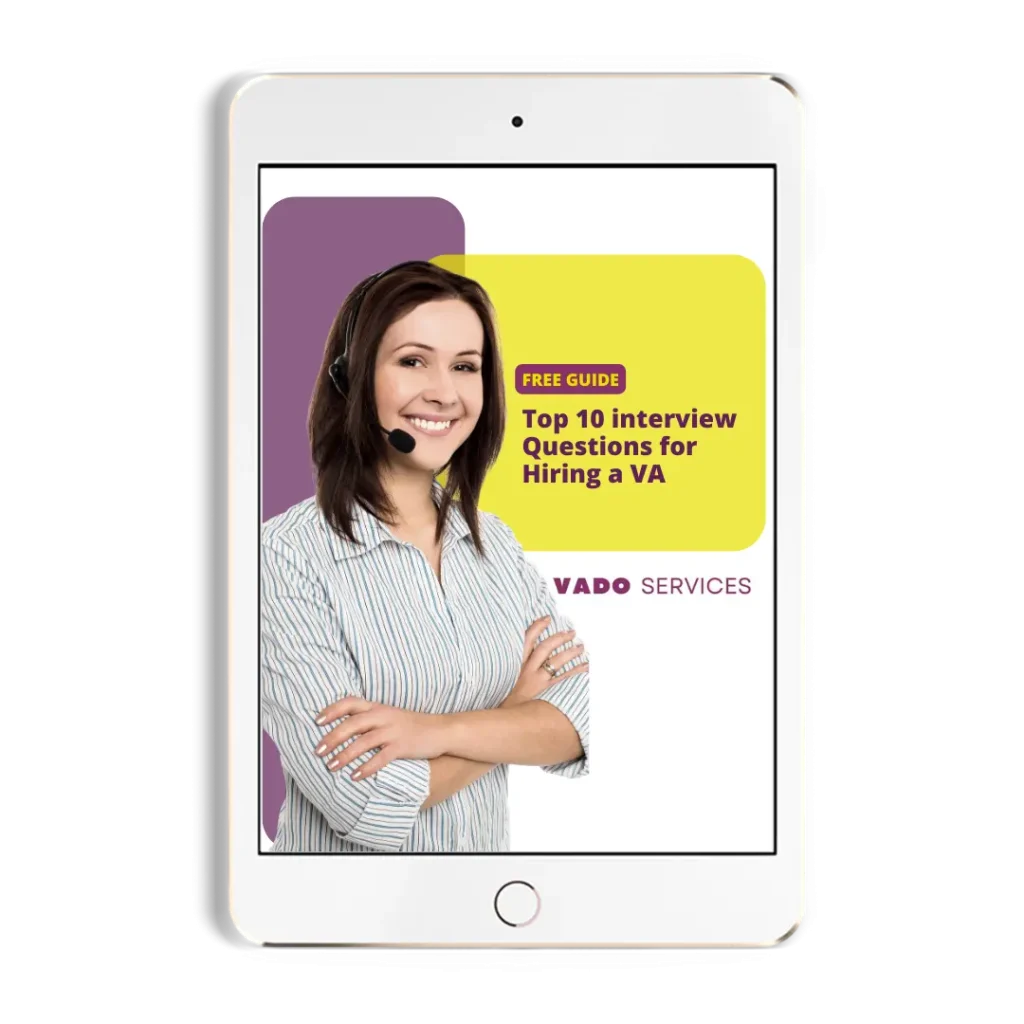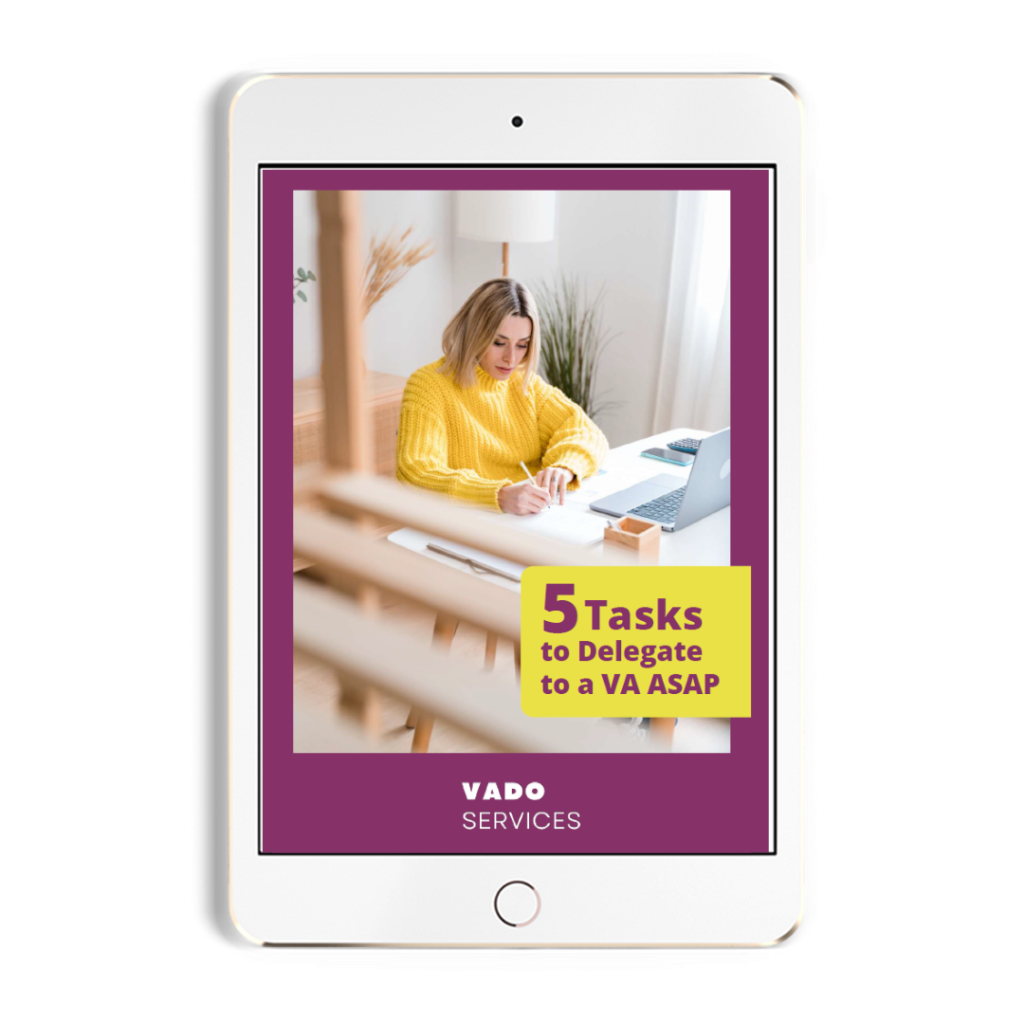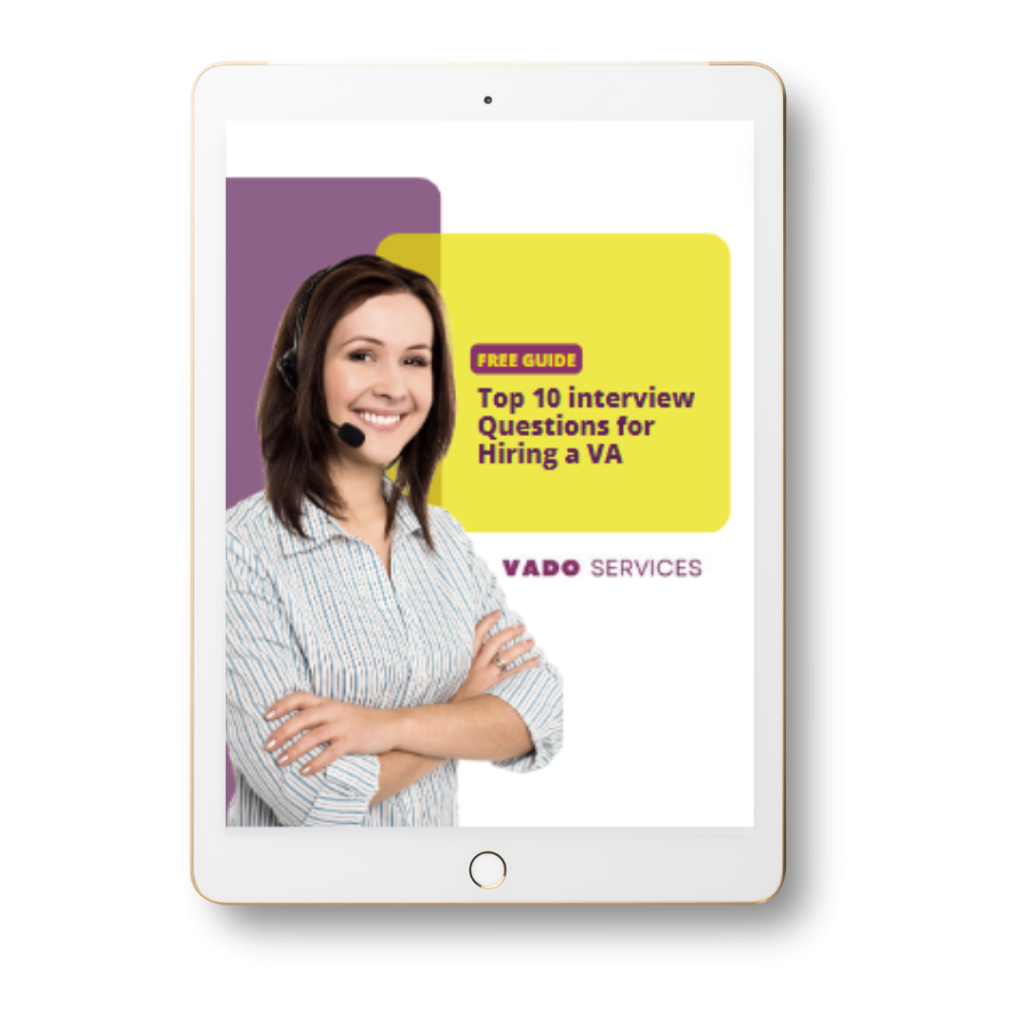Just like Picasso didn’t become an overnight sensation, acing virtual interviews takes time, practice, and a little finesse. We are all very aware that remote hiring has moved beyond being a trend-it’s a given in today’s world. But how do you ensure that you’re really getting the most out of these virtual conversations with potential employees? How do you create interview questions that dig into a candidate’s skill set but work virtually? Let’s dive in and find out together to get the keys to successful virtual interviews. Ready to begin?
The Growing Importance of Virtual Interviews in Remote Hiring
With the exponential growth in remote work-12% of the global workforce working remotely full-time as of 2023 and another 32% in hybrid model-virtual interviews have quickly become the new norm in hiring, making things very out-of-their-element for both a travel agent and small business owner. It’s tough to judge people without face-to-face interaction. But with the right strategies in place, virtual interviews can be no less effective, if not more so, than traditional face-to-face ones. The general transition to work-from-home has brought new demands in recruitment and unlocked the possibility of accessing a broader pool of talented individuals. Therefore, virtual interviewing has become an art to learn.
Understand the increased importance of virtual interviewing while leading through this new landscape. This ability to adapt and mastery could make all the difference in securing top talent for your business. You may be at a place where you wonder about good questions to ask VAs or other remote staff and how virtual interviews can help you judge their capabilities accurately.
The main issues you may notice are problems in judging a candidate’s personality and work ethic through a remote channel. You can avoid this by asking behavioral and situational interview questions. These types of questions allow you to delve deep into the candidate’s past experiences, giving you a much clearer picture of how they might fit into your company.
Another important consideration is the technological needs of the online interview. It means that both parties can have a smooth internet connection and would prefer a quieter place for a better-quality interview.
Step 1: Preparing for the Virtual Interview
As one prepares to conduct a virtual interview, of primary importance is that a structured interview process should be in place. Next in importance is selecting the appropriate technology. This can be a determining factor in how successful the interview will be. Lastly, pretest and have your equipment ready to go to avoid any technical issues of any kind during the interview.
Develop a Structured Interview Process
In this process of virtual interview, you will need to have a set of questions that will equally provide a very fair assessment for all the candidates. These should be prepared based on the job specifications and competencies that you are looking for. Each question should be carefully prepared in such a way that it brings out relevant skills, experiences, and qualities.
Also, think about the sequencing of your questions: from general, in getting to know them, to more specific, job-related questions. Be objective, and avoid biased questioning by sticking to your prepared questions. Remember, this process is all about consistency: not only does it present an effective way for you to compare candidates, but it also minimizes the risk of unintentional bias. You are now on the right track for creating an effective and successful virtual interview process.
Choose the Right Technology
Having structured your interviewing process, next in importance will be the selection of appropriate technology for the virtual interviews. You might want to use those that have been reputed to be reliable and efficient.
- Zoom: The platform offers high-quality video and audio, further integrated with screen sharing and breakout rooming features.
- Google Meet: Part of the Google Workspace, this platform offers seamless integration with other Google services like Calendar and Drive.
- Microsoft Teams: More than video conferencing, Teams supports a lot of collaboration capabilities and has very deep integrations across other Microsoft services.
Third-party or independent platforms-aside from choosing your primary platform, be ready with a backup plan. Technology can be quite unpredictable; having a plan B means you are guarded against unnecessary disruption in your interview process.
Test Your Equipment
For starters, you should have at least taken the time to test your equipment in advance to make sure your camera, microphone, and internet connection are all functioning properly. Avoid camera or audio glitches. You should be seen and heard with no lag or distortion.
Also, the stability of the internet connection is important. Do a speed test right away to make sure it is fast and secure enough for video conferencing. Remember, wired usually works better than wireless.
Finally, fully charge your device or keep it plugged in. The last thing you want is for your equipment to die in the middle of an interview. A little preparation goes a long way in coming across as a professional and capable candidate.
Step 2: Asking Valuable Interview Questions
As you develop your interview questions, there are three key types: behavioral, skill-specific, and cultural fit. Each serves a different yet important purpose in determining the suitability of your potential hire for the position. Finding a balance of each of these types will help you glean a comprehensive view of the candidate’s capabilities and fit.
Behavioral Questions
The key to formulating effective behavioral interview questions is to focus attention on the candidate’s past experiences for a semblance of how they have tackled similar tasks. These questions cannot be answered with a simple ‘yes’ or ‘no’, and they are very telling about a candidate’s problem-solving skills, adaptability, and resilience.
Consider adding the following as you construct your questions:
- Request specific examples of when the candidate exhibited each of the key competencies. For example, “Describe a situation where you needed to handle several client bookings simultaneously .”
- Ask candidates to identify challenges they’ve faced, how they overcame them, and what they’ve learned from failures.
- Request examples of when they have had to think critically or have used creativity in resolving an issue.
Skill-Specific Questions
Pivoting from behavioral questions, you will want to add in some skill-specific questions to your virtual interview process, tailored to the tasks at hand for the position. These are good for understanding a candidate’s proficiency level and adaptability in real-time with situations they would face on the job. For example, if the position is going to have to deal with any last-minute changes in the itinerary, you could ask, “How would you deal with last-minute changes in plans?” These sorts of questions will tell you not only about their technical knowledge but also about their problem-solving skills-their toughness, too. Remember, it isn’t just a question of knowing how to proceed; it’s about how they respond once things start to go wrong. The best way, therefore, to find this out is through questions that test for skills specifically.
Cultural Fit Questions
Cultural fit questions test how well the candidate will fit in with the values and behaviors of your company. This type of question is part and parcel of any great virtual interview. These types of questions determine whether or not the candidate’s behaviors, beliefs, and attitudes align with the culture of your company.
To that effect, here are some tips on how you can go about crafting great questions on cultural fit:
- Ask about their working style. Will that vibe work with your team?
- Ask how they like to be communicated with. Will the form of remote communication your team uses work for them?
- Discuss their values: Do they align with your mission and philosophy?
Step 3-Virtual Interview
Now that you have created good questions, it is now time to carry out the virtual interview. One of the most important things to observe in this activity is preparing a distraction-free environment, making sure professionalism is always there. Remember, making early rapport counts and while taking more notes is important; engagement with the interviewee is more essential.
Create Distraction-Free Environment
There are a number of things you need to make certain of to ensure a virtual interview goes well: it should be taken in a quiet room with good lighting and an unobtrusive background that is free of distractions. This, in turn, sets you up with a professional environment where, hopefully, you will be able to give your total attention to this interview. Take precautions against disruption, such as putting your phone off or onto silent mode, and letting others know you are interviewing.
Other tips to make the setting distraction-free include: Ensure the internet connection is good to minimize any irritant during the interview. Make use of good-quality headphones to cut down on background noise and for high audio clarity. Shut any extra applications running on your computer to avoid distracting notifications.
Build Rapport Early
After you have optimized the environment, making it ideal and free from distractions, start the virtual interview by breaking the ice-the conversation that will help you get along with the candidate. This will help to establish a connection and get the interviewee started with the process at ease in order to set the tone for a productive dialogue.
Start asking open-ended questions that would provide the candidate with an opportunity to talk about themselves. This can be about their day, their interests, or anything relevant to their CV. Of importance is that you actually listen to what they have to say and show interest in their responses. You want them relaxed and confident because this way, it will create an enabling environment that will help them open up and be as honest as possible during the interview. Note that rapport building is not just about small talk but creating an enabling environment where communication can take place effectively.
Take Notes, yet Remain Engaging
In a virtual interview, you will want to take notes without losing a high level of engagement with the candidate. Use tools and applications that will help you in doing this, but be certain that you remain very actively present in the conversation. This is one of those places where taking the notes doesn’t have to compromise your active listening and eye contact.
As a balance:
- Use screen-split mode: keep the note-taking app on one half of the screen and the video call on the other.
- Invest in a good-quality keyboard: silent keyboards avoid distracting typing noises.
- Develop shorthand skills: this will greatly speed up the process of your note-taking .
Step 4: Evaluating Candidates Remotely
To evaluate candidates remotely, there are a few different approaches you can take. First, use a scoring system to ensure fairness. Record the interview with the express permission of the candidate, for further reference. Finally, pay attention to any potential red flags. These will help ensure consistency and thoroughness in your review of the candidate.
Use a Scoring System
In fact, to effectively assess candidates in a remote setting, one must employ a rating system whereby key competencies are taken into consideration. This not only helps in maintaining objectivity but also in ensuring fairness in the process.
Your system could consist of the following:
- Skill assessment: Using a numerical scale for simplicity, rate a candidate’s skill level for the job.
- Cultural fit: Based on your company’s culture, decide how this candidate will fit in.
- Communication skills: Grade clarity, responsiveness, and listening skills.
Record the Interview – with Permission
In addition to a good scoring system, one of the most helpful tools you could use is recording the interview-obviously with the permission of the candidate. There are at least a couple of advantages to this method. Recording allows you to go back and hear again important parts of the interview that may be crucial for your decision. This would, in turn, free you during the interview to focus on the candidate, without having to bother about not being able to get all the information or taking long notes. Afterwards, you can share this recording with your team, promote transparency, and hold a collaborative decision. An excellent way to make sure that everyone involved in hiring gets all the information they need. Note that permission from the candidate should be sought in advance of recording, for privacy, as well as for trust-building purposes.
Red Flags
During a virtual interview, there are a number of warning signs one would want to look out for: poor communication skills, unpreparedness, or seeming disinterested in the position. These could all point out that this is not going to be the right candidate for the job, or perhaps not even do well when working remotely.
Things to watch out for include:
- Candidates who fail to answer questions or even express themselves. This could point towards inferior communication skills.
- Candidates who fail to have any research carried out on your company or the position being applied for. This is indicative of lack of preparation.
- Candidates showing disinterest in the job applied. This could be indicative of a lack of interest in the position.
Step 5: Follow-up and Further Actions
Of course, this does not stop here when the virtual interview is over. Send a thank-you note, add some value with constructive feedback if applicable, and do so in a timely fashion to sustain the candidate’s interest. This helps not only to professionalize the occasion but might also bring a bigger change in their perception of your organization.
Send a Thank-You Email
Sending a thank-you email to a candidate goes beyond good manners and is actually part of the candidate experience. It needs to acknowledge time taken by the candidate and should reiterate what the next steps will entail. A well-timed thank-you email can enhance the candidate’s impression of your organization by sending the message that you respect their involvement and that you’re prepared for the process of hiring.
How to Send a Thank-You Email:
- Be timely: emails should be written no more than 24 hours after the interview. Keep the candidate’s interest.
- Personalize the note: comment on one unique thing about the candidate or about the interview.
- Set expectations: in your note make sure to clearly outline what the candidate should expect next, whether it be another round of interviews or even just a timeline on when they might hear of a decision.
Following up quickly keeps the process moving and continues to show your commitment to a positive candidate experience. This is very important for reinforcing your employer brand and helping with retaining top talent, minimizing their potential loss to competitors.
Give Constructive Feedback-if Applicable
After a timely thank-you email, you may also want to make efforts to include constructive feedback where the situation calls for it. This is not only done so that the candidate can improve themselves, but so that your brand reputation benefits as well. The time you take to give considered feedback speaks volumes of respect and professionalism that sets you apart from others. Be honest but tactful, identifying areas for growth as well as strengths. Remember that all of your comments must be constructive-not personal. If you are straightforward yet sensitive in your feedback, the unsuccessful applicants may learn where their development areas are, and the successful applicants may start their jobs with a better idea of your expectations.
Move Quickly
In this very busy hiring market, you will need to make decisions right away so that the best candidates are not filtered out to competitors. Shortening your hiring cycle is critical to keeping candidates interested and committed. Here’s how you could speed up your recruiting process on the fly:
- Be prepared: Make sure your interview questions, tools for assessment, and criteria for hiring are all ready prior to beginning the interviewing process.
- Also, communicate clearly and as soon as possible following each interview about next steps to keep candidates interested in the position.
- Make swift decisions: Don’t let the ink dry. When one finds a potential candidate, an offer should be extended without wasting any time in hiring the best talent available.
Building Virtual Interviews into a Key Strength for Your Hiring Process
Virtual interviews can really make your hiring process stand out, give you access to a broader range of great candidates, and even allow you to make informed decisions, even from afar. With the proper strategies in place, virtual interviews can become one of the high points of your hiring process.
But first, master the skills of virtual interviewing, including comfort with the technology, the art of reading the non-verbal in a digital environment, and a set of standard questions that can be used to effectively evaluate candidate skills, experience, and fit for your organization.
Also, it has to be reminded that even though the setting is virtual, the principles of effective interviewing stand the same: establishing rapport, asking open-ended questions, listening thoroughly, and giving follow-up responses. What differs is the medium of communication, but the goal remains the same: to find the best candidate for the job.
Last but not least, consider training for your hiring team to further streamline your virtual interviews and improve the quality of your hiring decisions. Get started with downloading the free checklist on “Top Questions to Ask When Hiring a Virtual Assistant” or booking a free consultation. Understand and know about best practices within remote hiring. By using virtual interviews to your advantage, you are able to turn them into one of your biggest strengths when it comes to hiring. With virtual interviewing, you will surely be able to locate and bring on board the finest talent, wherever they may be in the world.




